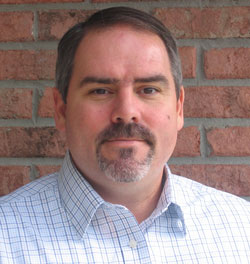
From the Editor - Gold Miners Converge on Denver

The mood was very upbeat. After eight years of rising prices and increasing investment demand, according to the CPM Group, it is clear that the gold market is not experiencing ‘just another bull market’ along the lines of the five previous ones. In its annual report, CPM Gold Yearbook 2009, the group says the gold market in fact appears to be in the early stages of a secular, long-term shift, in which gold is reclaiming at least a portion of its status as an important financial asset.” The study, as do others (See Markets, p. 96), also cautions investors that recent new high gold prices might be based on economic fears—and recessions end. But, no one expects gold to drop too far.
The forum is organized with juniors presenting in concurrent sessions the first day, followed by mid-tier miners, royalty companies and other precious metals, in concurrent sessions on the second day. The morning of the third day is reserved for the majors. Momentum and investor confidence build throughout the event. Junior gold companies are speculative plays but it’s where the big opportunities for traders lie.
The usual suspects were present. Rob McEwen was there wearing two executive hats, Minera Andes and U.S. Gold. He expressed his impatience with JV partners in Argentina. George Salamis, CEO from Rusoro Gold—the Russian-owned mining company with projects based in Venezuela—was trying to downplay the spy novel image that some in the industry have conjured. Jake Klein, CEO, Sino Gold, which was recently sold, gave an interesting perspective of the fractious nature of the Chinese gold market. Doug Silver, CEO, International Royalty Corp., posed a rhetorical question of why an investor would choose an Exchange Traded Fund (ETF) over a royalty company.
A large crowd gathered to hear Ivanhoe Mines CEO Bob Friedland discuss the Oyu Tolgoi project in Mongolia. To demonstrate the sheer size of the deposit he superimposed a 3-D view of the oerbody above a map of Manhattan. He also discussed some of the new exploration techniques the company was using to map ore deposits in the Gobi Desert. Friedland, who talks quickly, could barely contain his presentation in the time allowed, but managed to also weave philosophy with humor.
Aaron Regent, the new Barrick CEO, drew a standing-room only crowd. He might have been the youngest gold executive and certainly the youngest among the major gold producers. He fielded several questions about the recently announced de-hedging. For his first appearance at the Denver Gold Forum, he held his own as one would expect from the leading gold producer.
The situation is always an interesting role-reversal, where the CEO gets 25 minutes to put his best foot forward and then takes questions from the analysts and investors. Every CEO thinks his company is under-valued. On more than one occasion, however, an investor asked: “Sir, you’re in the fifth year of a major bull market, flush with cash, why don’t you fund some of these projects yourself instead of continuing to dilute the stockholder value?” In the corporate world, the management team answers to the CEO. At the Denver Gold Forum, the CEOs pitch their companies to the investment community and they answer to the investors.

Steve Fiscor, Editor-in-Chief,
E&MJ